How Fleets Can Easily Remove Crash Preventability Off CSA Scores
CNS can help with our Roadside & Incident Report Management service where a team of DOT Compliance Specialists will assess the Department of Transportation safety records
We are a team of DOT Compliance and Licensing Professionals helping trucking and transportation companies remain safe, compliant, and profitable.
CNS or Compliance Navigation Specialists is DOT Compliance company that assists trucking and transportation companies remain DOT Compliant. We are part of a network of companies, CNS Companies, specializing in services related to the transportation, manufacturing, construction, service, education and medical industries.
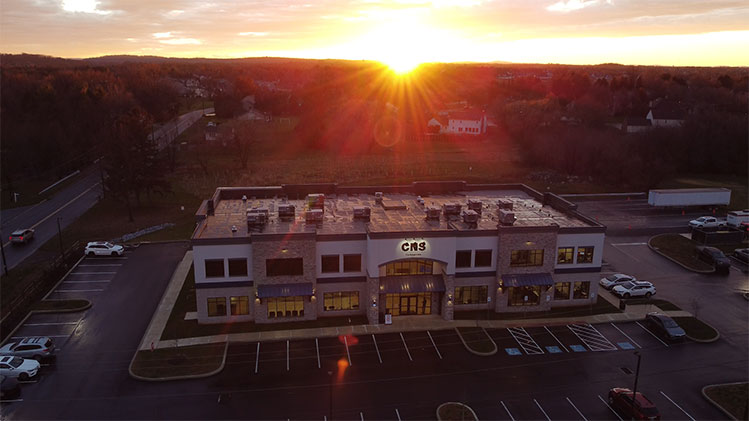
A full-scale DOT Compliance Program managing a long haul carrier’s safety, compliance, licensing and more.
Learn more >>>
A DOT Compliance Program that keeps motor carriers compliant with the 6 Basic DOT Regulations required of all carriers.
Learn more >>>
Our Short-Haul/Construction Program is a full-scale program designed for private carriers that do not haul for-hire.
Learn more >>>
Our most comprehensive DOT Compliance Program, operating as your company’s off-site Safety Director or assisting your current safety personnel.
Learn more >>>
Our Non-CDL Program is a full-scale program managing safety, compliance, licensing and more for moving companies, couriers, landscapers, or any company subject to DOT regulations and does not employ CDL drivers.
Learn more >>>
Our DOT Audit Services cover a number of different types of DOT Audits that new and existing carriers will be subject to.
Our DOT Driver Services help trucking companies and carriers to stay compliant as they grow and hire more drivers.
Our DOT Vehicle Services focus on ensuring your vehicles are compliant with DOT Regulations, which is just as important as your drivers.
Our DOT Services for Special Carriers focus on companies outside of the typical motor carrier, like HAZMAT, Passenger and Bus Carriers.
CNS is part of a group of companies that offer other necessary services for the trucking and transportation industry, such as Commercial Trucking Insurance, CDL Training, Online Training Course, and even Healthcare.
Our DOT Licensing Services will cover you whether you are an existing company or just starting a trucking company. Our DOT Licensing Specialists can help you get up and running and in days with your DOT number, MC Authority, EIN, UCR, IFTA, 2290 HVUT, Fuel Taxes and can even set you up to get your Commercial Driver's License (CDL) with CNS Driver Training Center.
Our DOT Licensing Specialists will help you with every aspect of starting a trucking company. All you need to do is choose a name for your trucking company.
You will need to ensure your DOT Number, MC Authority, Vehicle Registration, etc. is all set up properly when you start your trucking business.
Our Licensing Specialists can help with all aspects of filing and renewing licenses, fuel taxes, etc.
CNS is part of a group of companies that offer other necessary services for the trucking and transportation industry, such as Commercial Trucking Insurance, CDL Training, Online Training Course, and even Healthcare.
CNS can help with our Roadside & Incident Report Management service where a team of DOT Compliance Specialists will assess the Department of Transportation safety records
CNS or Compliance Navigation Specialists is DOT Compliance company that assists trucking and transportation companies remain DOT Compliant. We are part of a network of companies, CNS Companies, specializing in services related to the transportation, manufacturing, construction, service, education and medical industries.
CNS Companies is a network of companies specializing in services related to the transportation, manufacturing, construction, service, education and medical industries. Our DOT Compliance division is handled by Compliance Navigation Specialists, CNS Insurance handles Commercial Truck Insurance, CDL training is managed by the CNS Driver Training Center and healthcare is managed by CNS Occupational Medicine.
We are a team of DOT Compliance and Licensing Professionals helping trucking and transportation companies remain safe, compliant, and profitable.
CNS or Compliance Navigation Specialists is DOT Compliance company that assists trucking and transportation companies remain DOT Compliant. We are part of a network of companies, CNS Companies, specializing in services related to the transportation, manufacturing, construction, service, education and medical industries.

A full-scale DOT Compliance Program managing a long haul carrier’s safety, compliance, licensing and more.
Learn more >>>
A DOT Compliance Program that keeps motor carriers compliant with the 6 Basic DOT Regulations required of all carriers.
Learn more >>>
Our Short-Haul/Construction Program is a full-scale program designed for private carriers that do not haul for-hire.
Learn more >>>
Our most comprehensive DOT Compliance Program, operating as your company’s off-site Safety Director or assisting your current safety personnel.
Learn more >>>
Our Non-CDL Program is a full-scale program managing safety, compliance, licensing and more for moving companies, couriers, landscapers, or any company subject to DOT regulations and does not employ CDL drivers.
Learn more >>>
Our DOT Audit Services cover a number of different types of DOT Audits that new and existing carriers will be subject to.
Our DOT Driver Services help trucking companies and carriers to stay compliant as they grow and hire more drivers.
Our DOT Vehicle Services focus on ensuring your vehicles are compliant with DOT Regulations, which is just as important as your drivers.
Our DOT Services for Special Carriers focus on companies outside of the typical motor carrier, like HAZMAT, Passenger and Bus Carriers.
CNS is part of a group of companies that offer other necessary services for the trucking and transportation industry, such as Commercial Trucking Insurance, CDL Training, Online Training Course, and even Healthcare.
Our DOT Licensing Services will cover you whether you are an existing company or just starting a trucking company. Our DOT Licensing Specialists can help you get up and running and in days with your DOT number, MC Authority, EIN, UCR, IFTA, 2290 HVUT, Fuel Taxes and can even set you up to get your Commercial Driver's License (CDL) with CNS Driver Training Center.
Our DOT Licensing Specialists will help you with every aspect of starting a trucking company. All you need to do is choose a name for your trucking company.
You will need to ensure your DOT Number, MC Authority, Vehicle Registration, etc. is all set up properly when you start your trucking business.
Our Licensing Specialists can help with all aspects of filing and renewing licenses, fuel taxes, etc.
CNS is part of a group of companies that offer other necessary services for the trucking and transportation industry, such as Commercial Trucking Insurance, CDL Training, Online Training Course, and even Healthcare.
CNS can help with our Roadside & Incident Report Management service where a team of DOT Compliance Specialists will assess the Department of Transportation safety records
CNS or Compliance Navigation Specialists is DOT Compliance company that assists trucking and transportation companies remain DOT Compliant. We are part of a network of companies, CNS Companies, specializing in services related to the transportation, manufacturing, construction, service, education and medical industries.
CNS Companies is a network of companies specializing in services related to the transportation, manufacturing, construction, service, education and medical industries. Our DOT Compliance division is handled by Compliance Navigation Specialists, CNS Insurance handles Commercial Truck Insurance, CDL training is managed by the CNS Driver Training Center and healthcare is managed by CNS Occupational Medicine.
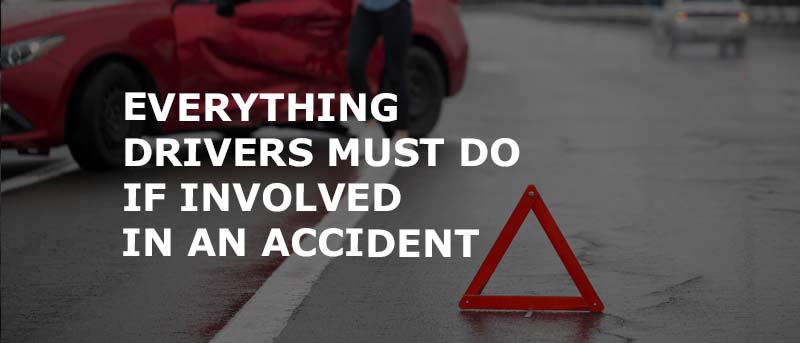
Don’t let your emotion put you in trouble, and do not admit fault. Plaintiff employers love talkative drivers.
Eventually, you or one of your drivers will experience a trucking accident and nearly 75% of truck related collisions are caused by the non-professional driver.
If the trucker is at fault, more than 50% of these crashes are caused by driver fatigue and driver error, according to statements made by the Pennsylvania State Police motor carrier enforcement unit.
With nuclear verdicts, staged accidents, and fraudulent insurance claims on the rise, here is a guide on everything a driver needs to know when involved in an accident, how to record evidence, and when a post-accident drug and alcohol test is required.
The FMCSA requires some emergency devices to be in the vehicle. But here is a full list of items needed if involved in an accident:
Most importantly, a driver involved in an accident needs to remain calm. Everything you say and do (and even don’t do) can be used against you.
Don’t let your emotion put you in trouble, and do not admit fault. Plaintiff employers love talkative drivers.
More Accident-Related Articles to consider:
If you can, turn your flashers on and ease off the road while closely checking for traffic next to you or behind you with your mirrors.
Within the first 10 minutes, set up your flares or the three triangles behind the truck.
Proper emergency device placement requirements
If possible, it is recommended to wear reflective gear when putting down and collecting emergency triangles or flares.
On a divided highway proper placement is as follows:
Set the closest right triangle behind your left tires, the next a little to the right and the furthest one a little more to the right, so they guide the approaching vehicles away from the truck almost like they were merging left.
On a two-lane road (one lane in each direction) the proper placement of triangles is:
By setting the triangles up in this way you can alert traffic coming from both directions of the issue up ahead.
If there is a curve on the road or an obstructed view, move the rear-most triangle between 100-ft and 500-ft behind the truck to provide extra warning to future traffic.
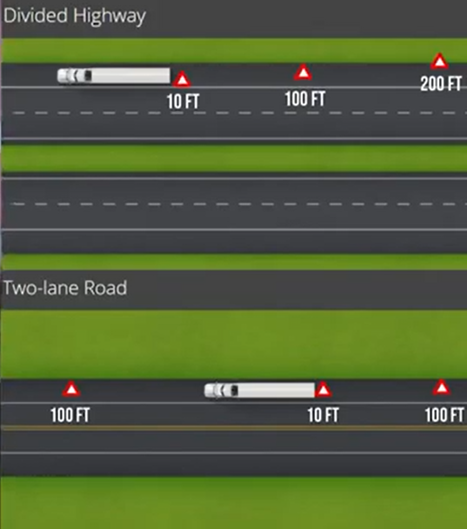
Notify Police and your Company of the Accident
Drivers must contact the police or highway patrol, especially if there is an injury, fatality, or interference with traffic.
Regardless of the severity of the accident, your company must be notified.
When talking with the enforcement personnel and your company, relate the facts of the accident without making a judgement of responsibility.
Once the company is notified, the driver or company official must contact the insurance company as quickly as possible.
If a media representative shows up at the scene of the accident, kindly refer them to your company’s safety department. The involved driver should never speak to the media.
Identify is this is a DOT “reportable” Accident?
DOT “recordable” crashes need to be entered on the company’s accident register and your insurance carrier needs to be notified as soon as possible in case an adjuster is needed on-site.
A DOT “recordable” accident includes an occurrence involving a commercial motor vehicle that results in (390.5 accident definition (1)):
A DOT Recordable accident does not include (390.5 accident definition (2)):
A drug and alcohol test is only required for a reportable crash that involves the driver being issued a citation or if there is a fatality.
Gathering evidence at the scene of the accident
This is one of the most critical elements of an accident as it may take days, weeks, or even months before accident responsibility or fault is determined.
It is important to keep in mind that many accidents will result in bodily injury claims against you and your company.
Many companies have an accident report kit that includes instructions of what information to gather and document.
The rule of thumb here is do not rely on your memory.
What evidence to collect:
The evidence that should be photographed are:
After everything is collected. Write down any other notes that you remember.
Drug and alcohol tests are not required after every accident.
A CDL driver is required to take a post-accident drug test if:
Also, it is important to note that a driver is still liable to take a drug and alcohol test if a citation issued within 32 hours of the accident.
If a citation is issued after the 8-hour mark, the motor carrier must make a note saying “a citation was not issued until this time, which was after the 8 hours for alcohol testing.”
A driver has 2 hours in which an alcohol test should be completed, however it must be completed within 8 hours. If the driver goes over the 2-hour mark, they must provide an explanation as to why there was a delay and the motor carrier must provide a written explanation and keep in their company files.
A drug test needs to be completed as soon as possible; however, it must be completed within 32 hours. At times there might be a delay in the issuance of a citation, however as long as the citation is issued with 32 hours, a drug and alcohol test is required.
Compliance Navigation Specialists works with Quest Diagnostics and have over 10,000 locations available for testing, whether it is necessary after an accident or for a pre-employment screening.
For post-accident alcohol testing, CNS will coordinate a location for you.
We also offer a comprehensive Drug and Alcohol Consortium Administration Services (C/TPA) for companies that are regulated by Federal and State government.
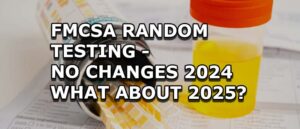
According to the DOT’s 2024 DOT Random Testing Rates Notice, annual random testing rates for all DOT Agencies will remain the same as 2023. Each
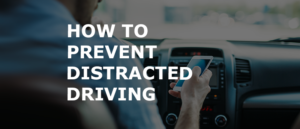
Distracted driving is a major issue among all types of drivers but is an especially important concern for commercial motor vehicle drivers as it can
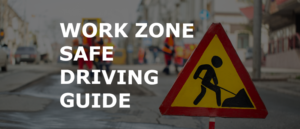
Driving in road construction areas can be among the most dangerous type of driving you will encounter. Spring means warmer weather is here and construction

On January 6, 2020, the FMCSA launched the CDL Clearinghouse, an online database where CDL driver drug and alcohol testing violations and return-to-duty information will
Our DOT Compliance Programs ensure it is your top priority and keeps your business running.
Receive the latest transportation and trucking industry information about FMCSA and DOT Audits, Regulations, etc.

According to the DOT’s 2024 DOT Random Testing Rates Notice, annual random testing rates for all DOT Agencies will remain the same as 2023. Each

Distracted driving is a major issue among all types of drivers but is an especially important concern for commercial motor vehicle drivers as it can

Driving in road construction areas can be among the most dangerous type of driving you will encounter. Spring means warmer weather is here and construction
Join our monthly newsletter and stay up-to-date on trucking industry news and receive important compliance and licensing tips.
Join our monthly newsletter and stay up-to-date on trucking industry news and receive important compliance and licensing tips.